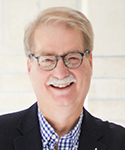The New Year represents a confluence of festivities -- some sacred, others civic. Most of us live by several calendars that overlap.
A prominent calendar in our culture is the rhythm of athletic seasons. Some of us live from the opening day of baseball to the first kickoff of football to the midnight madness of college basketball, then to the baseball World Series, and then the college bowl games, the NFL Super Bowl and March Madness, and then the opening pitch is thrown again. Many organize their lives around their favorite teams. Psyches flourish or falter alongside the fortunes of their heroes. There are sacred spaces (Fenway Park and Cameron Indoor Stadium are but two examples), secret societies (betting services, fantasy football), and remembrances of shared history (for example, the remarkable Ken Burns PBS series on Baseball, updated last fall). It is not unimportant that parents pass the importance of the sports calendar along to their children.
A second calendar is our civic calendar. This includes New Year's Day, a time for making resolutions for reinvention. There is Memorial Day, Independence Day, Labor Day, Thanksgiving Day, and the recently added Martin Luther King, Jr. Day. The civic holidays may elicit deep memories of loss and sacrifice in some families, while others consider them simply as a respite from work and school. Memorial Day marks the beginning of summer and Labor Day its conclusion, and what happens in between (vacations, leisure, longer days, and a break from school) is more significant for most that what occurs on the particular holidays that frame the season. Thanksgiving is an especially ambiguous ritual, since it began as a harvest festival and most of us now live at some distance from the profession of agriculture. It has also become closely associated with the onset of Christmas commerce in general and "Black Friday" in particular.
A third calendar, for a Christian, is the liturgical year. It is a way of marking time according to the life of Jesus, beginning with the anticipation of his coming (Advent), the celebration of his birth (Christmas), and manifestation of his presence in the world (Epiphany) and his baptism. The most frequently told stories about Jesus (his baptism, changing water into wine at a wedding, and his transfiguration) introduce us to his glory, but also prepare us for his suffering. In the season of Lent, the followers of Jesus enter into his suffering, and on Palm/Passion Sunday witness his entry into Jerusalem, the place of his final testing and, ultimately, his death on a cross for humanity (Good Friday). After three days God raises him from death on Easter. Over the next fifty days he teaches the disciples about God's purposes for the world, and on Ascension Day he returns to be with God, preparing for the coming of the Holy Spirit on the Day of Pentecost. The Sundays after Pentecost move into Ordinary Time, finding their climax on Christ the King Sunday, which signifies the fulfillment of God's purposes on earth and in heaven, as Jesus is seated at the right hand of God. Then we quickly move to the first Sunday of Advent.
We live in each of these calendars and each shapes our lives. One of the great challenges for us is to recover the thickness of the Christian story and the adventure of the life of Jesus. Along the way, we will also discover that one of the most essential acts of leadership is to narrate our passage through time, infusing it with greater meaning, and to call our constituents to be passionate participants in that which is worthy of our engagement.
Ken Carter is the senior pastor of Providence United Methodist Church, Charlotte, North Carolina.







